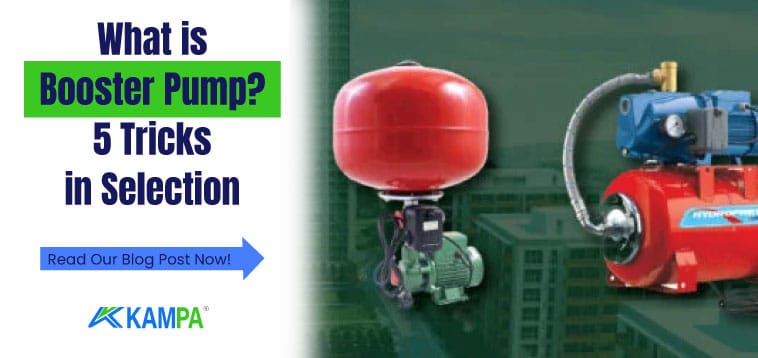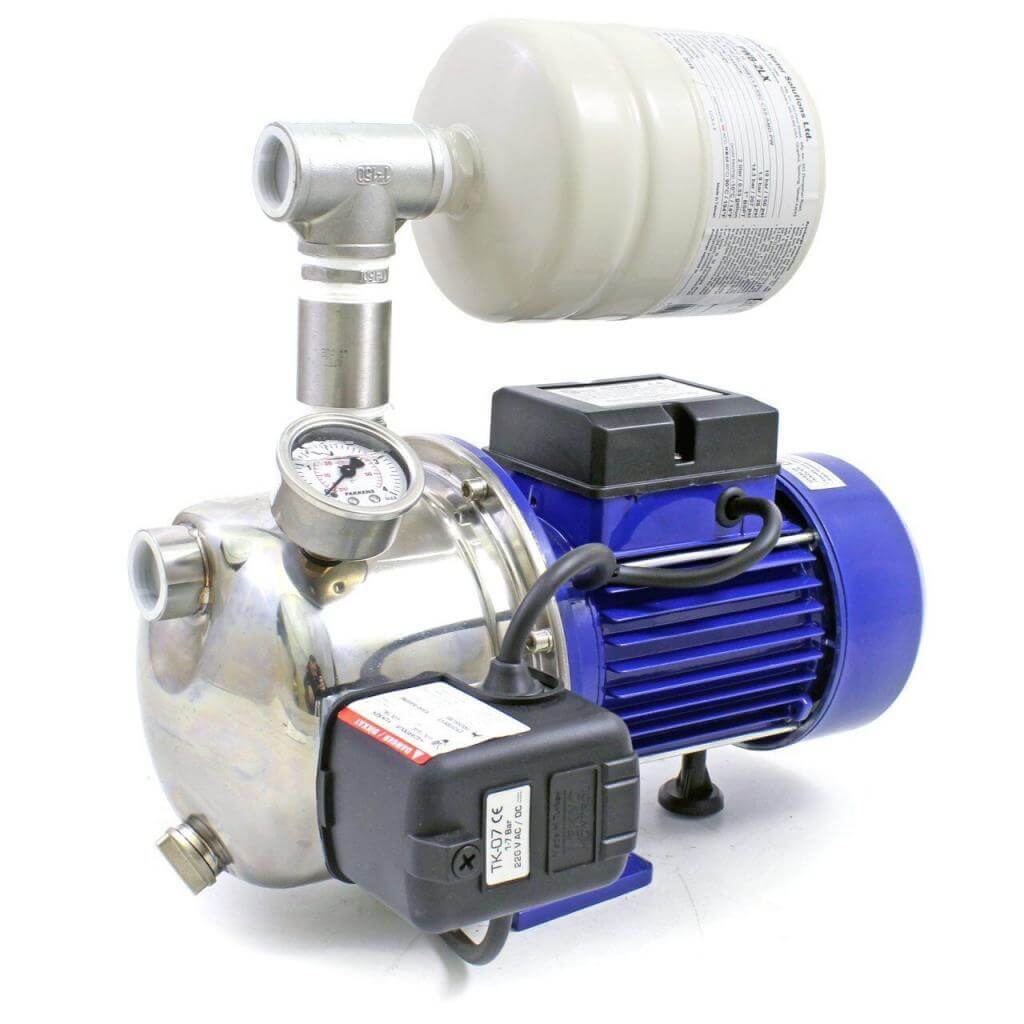What is Booster Pump? 5 Tricks in Selection
So what will we talk about: What is a booster, what does it mean, why is it used, why is it used, where do I need it but I didn’t realize it, and in the end you will see that it is actually easier than everything.
Table of Contents
A booster pump helps to increase the pressure and volume of water flowing from your faucet or shower head. Life with low water pressure is a nuisance.
If you have ever tried showering under a drop of water and had to walk in circles just to get wet, then you are aware.
Low water pressure makes simple tasks like bathing or brushing your teeth difficult. But a booster pump can be the perfect solution.
Booster in technical terms: With the development of our country, the use of booster in our buildings has become widespread. Due to the need for high structure and water storage brought by urbanization, the use of booster in buildings has become mandatory.
Hydrophore, known as pressurization of water, is a water pressurization system where water pressure is insufficient. It is used to meet the pressurized water need
in cases where water pressure is not sufficient.
What is a Booster Pump?
An auxiliary pump increases low water pressure and flow. It provides the extra support needed to bring your water pressure to the desired level.
A booster pump provides pressure to move water from a storage tank or throughout a home or commercial facility.
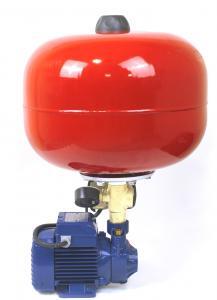
IF YOU WANT TO LEARN WHAT HYDROFORFOR is MORE DETAILED AND IN THE FINEST DETAILS, YOU CAN BROWSE OUR BLOG, LINK TO WHICH I HAVE LEAVED.. . About Booster
What does a booster set consist of?
Boosters are devices that convert stagnant water into pressurized water. Its main elements are;
- Pump
- Engine
- Control Panel
- Floater
- Valve
- Check Valve
- Suction and discharge collector
- Manometer
- Pressure Switch
- Chassis
- Balance Tank
HOW TO CALCULATE THE BOOSTER?
Factors to be Considered While Making Booster Calculation;
- Flow rate (Water quantity)
- Discharge height
- Suction depth
- Suction line diameter
- Discharge line diameter
1- Flow rate
Q = A x T x B x f (liters/hour)
Q: Flow rate (liters/hour)
A: Number of families or apartments: A
T: Individual’s daily water consumption: T = 100 – 150 liters/day
B: Average number of individuals for the family: B = 4 – 5
f: Simultaneous water use factorQ = A x T x B x f (liters/hour)
2- Head height (Hm)
Hm = ( A x B x C ) + H(SPECIAL) + H(FLOW) (mSS)
Hm: Head (mss)
A: Storey height (usually between 2.8 meters – 3 meters for domestic applications)
B: Number of storeys
C: Safety coefficient (C=1,20 for new buildings, C=1,30 for old buildings)
HÖZEL: Pressure required for special equipment (from table)
HAKMA: Place of use pressure (HAKMA = 15 mSS)Hm = ( A x B x C ) + H(SPECIAL) + H(FLOW) (mSS)
Hm: Head (mss)
A: Storey height (usually between 2.8 meters – 3 meters for domestic applications)
B: Number of storeys
C: Safety coefficient (C=1,20 for new buildings, C=1,30 for old buildings)
HÖZEL: Pressure required for special equipment (from table)
HAKMA: Place of use pressure (HAKMA = 15 mSS)
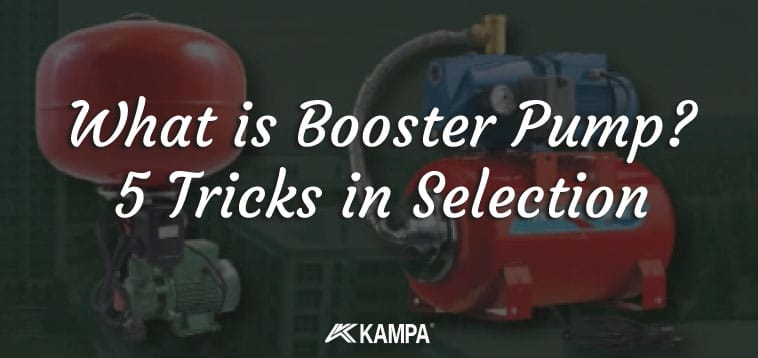
Sample Booster Calculation
Let’s calculate the capacity of the booster to meet the water needs of a new five-storey complex consisting of three blocks of 60 flats. Each apartment has a separate meter. Shock shower is used in the bathroom faucet.
Q = A x B x T x f (Litres)
Q = 180 x 5 x 120 x 0,25 = 27,000 litres/saat = 27 m3/h
Hm = (2,8 x kat sayısı x C ) + H + H
Hm = (2,8 x 5 x 1,3) + (10 + 15) + 15 = 58,2 mSS = 60 mSSQ = A x B x T x f (Litres)
The pump of the booster to be selected must provide Q = 27 m3/h Hm = 60 mSS values. The balance tank to be used with the booster must be minimum 500 liters and the front gas pressure must be 5.5 bar.
PRACTICAL BAR SELECTION TABLE ACCORDING TO THE NUMBER OF FLOORS (YOU CAN EASILY LOOK AT OUR SELECTION TABLE)
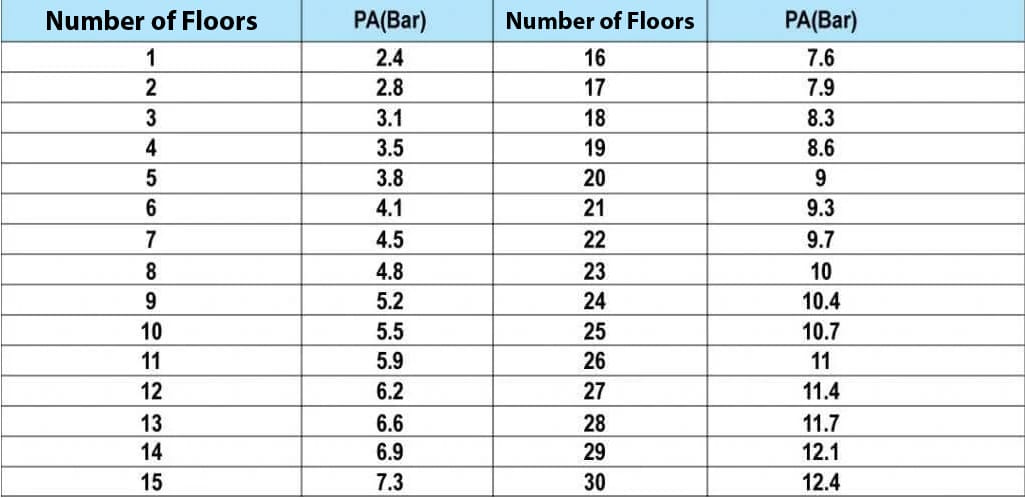
PRACTICAL (m³7H) SELECTION TABLE ACCORDING TO THE NUMBER OF APARTMENTS (YOU CAN EASILY LOOK AT IT FROM OUR TABLE)
What Causes Low Water Pressure?
1. Gravity : Gravity directs or slows the flow of water. The higher the height to which the water must be distributed, the lower the water pressure. A gallon of water weighs 8 pounds.
If water moves uphill or up several floors, gravity wants to send it right back down. Buildings lower than the water source may not have the same problem. Skyscrapers, apartment buildings and multi-storey homes and businesses need a large booster pump to move water up many floors.
2. Distance from the water source: The distance from the water source and the size of the water pipes affect the water pressure. If your home or business sits at the end of the water supply line, the water flow may be low until it reaches you. If your water pipes are too small, a smaller amount of water will pass through your fixtures.
3. Low city water pressure: Your house may be below the water supply line, your plumbing pipes may be clean and you still have low water pressure. Sometimes the low water flow is caused by low pressure water from your local water utility.
4. Additional water systems: Additional water treatment systems or other water fixtures in your home bring you clean water but can lower your water pressure. Adding a booster pump can restore your water pressure.
5. Plumbing problems: If low water pressure is the result of gravity, transportation or additional systems, a water pressure booster can solve the problem. However, other times plumbing problems can be the cause. Check your plumbing before purchasing a water pressure booster. Pipes may be clogged or the pressure reducing valve may need adjustment.
How does the booster work?
- Boosters deliver the water they absorb from a certain water reservoir to distant points thanks to high pressure.
- They operate in a certain pressure range.
- Thanks to the expansion tank next to them, they keep pressurized water at the ready.
- The electrical panels on the booster provide convenience in terms of booster protection and sequential operation.
- Maintenance of the booster is important for the life of the booster.
- Step type boosters should not operate without water.
- For this purpose, an electric water level switch is installed in the water tank and the water level in the tank is stopped at a level close to the suction level of the booster.
What are the Components of a Booster Pump?
Most booster pumps, regardless of manufacturer, contain the same basic components:
- Engine
- Propellers
- Entry and exit
- Pressure or flow sensing device
- Booster pumps have an impeller that moves water in through the inlet and out through the outlet.
- A motor turns the impellers. Booster pumps differ in how they suck in and push out water.
- Some booster pumps use a rotating impeller while others use an oscillating diaphragm. Oscillating diaphragm pumps deliver water using two oscillating or rotating plates, one with cups and one with recesses.
- As the plates come together, they compress the cups and push the water out. As the plates open, more water is absorbed.

Will the Booster Pump Increase Pressure & Flow Rate?
A booster pump forces water to flow faster through plumbing pipes by increasing the water pressure. But there is a pump curve to keep in mind: as the pressure required to move the water increases, the flow rate decreases.
Think of putting your thumb on a garden hose. As you do so, the water comes out at a higher pressure, but the flow rate is limited because of your thumb. A booster pump works in the same way.
It delivers the most water at the highest flow rate under low pressure. If water leaves the pump without any restrictions, it moves at a greater flow rate.
But let’s imagine a house where water has to travel uphill on bends in the pipes through a kitchen faucet. When a pump is installed in the plumbing, the flow rate slows down and the pressure from the pump becomes even higher.
How to Use Booster Pumps?
Booster pumps increase low water flow in water systems or industrial equipment. They transport water from a lake, pond or storage tank for use in a home or commercial building.
A house that does not get enough pressure from the city water supply will need a pump to increase the low water pressure.
A hotel needs a large commercial utility pump to send water all the way to the top story.
A booster pump re-pressurizes the water in a storage tank and sends it to the tap or throughout the house. In a rain harvesting system, for example, water is collected in a storage tank.
To flush toilets or use it for washing clothes, water has to be pumped out of the tank and into the house. You use a booster pump to move the water.
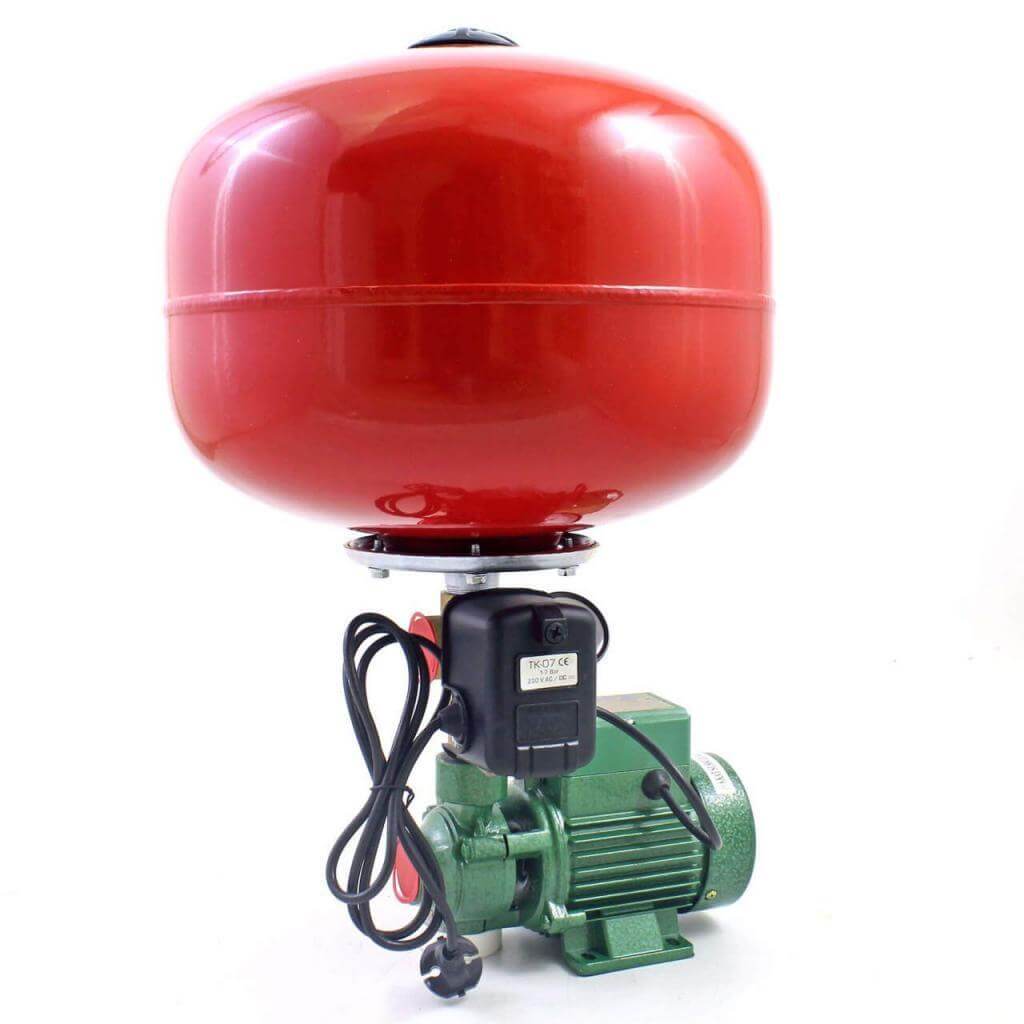
A Home Booster Pump
A single booster pump can increase water pressure throughout the house. Sometimes well water users want to increase the flow from a low recovery well to their home.
Low recovery wells do not produce enough water to meet household demand. A water pressure booster draws water from the well water storage tank to pressurize the water inside the house.
A private well that does not produce enough water to meet demand requires a storage tank to fill up over time. It also requires a home booster pump from the tank to meet daily demand.
Do I Need a Booster Pump?
If you have low water pressure that is not caused by a leak or if you need to increase the water pressure for a specific application, a booster pump is the best option.
Questions to Ask When Purchasing an Auxiliary Pump :
- What is my water flow rate? Calculate how many gallons of water you receive per minute, taking into account all fixtures. Learn how to calculate the flow rate.
- How much water do I need? Think about how much water your home or business uses.
- Is the water source above or below the pump? Think about whether your water needs to go uphill or up several floors.
- How much pressure do I need? Most people prefer high water pressure when taking a shower. However, too high a pressure destroys plumbing, fixtures and appliances.
- Most homes have a pressure reducing valve where the water line enters the home to maintain water pressure. Pressure above 60 psi will damage a domestic plumbing system.
Which booster pump you need depends on how much water you use, the desired pressure and the location of your water supply. For example, if you have a large house, you may need a booster pump that can provide pressure to the second or third floor.
Applications such as a reverse osmosis system with low feed pressure or water with high TDS (total dissolved solids) require more pressure.
How Do You Size a Utility Pump?
Ask these questions to find the right size booster pump for you:
- Do you have a two-story, four-bedroom, one-bathroom house?
- Are you moving water a considerable distance?
- How far away is your water source?
Single impeller pumps are not good at drawing water from a distance. If you want to use water from a pond for irrigation, you need something with more horsepower to pump water for a long time.
Water weighs eight pounds per gallon. If the water needs to go up a one-inch pipe that climbs several feet, the pump has to push a significant amount of weight.
Tips for Booster Pump Installation
Where is the booster pump installed?
The booster pump is installed where you need to move the water. For example, in a house with low water pressure, you should install the pump on the main line where water enters the house. Install the inlet and then the outlet returns to the plumbing supply.
- Always have a bypass in case the pump fails. A bypass allows you to isolate the pump if it fails and you need to fix the problem. You can bypass the pump and still get water in the house.
- Test the pump before connecting it to the house. Sometimes a leak can cause the pump to cycle due to low flow rate. The cycle causes the pump to start and stop in rapid succession.
- Booster pumps are activated by flow rate or pressure or both. If you find a leak, isolate the pump and test it to make sure the problem is not in the pump. Then you can find the cause and fix the leak.
How to Keep Your Booster Pump Quiet?
Consider pump vibration during installation. The way you install a booster pump can increase the noise it makes if you are not careful.
Do not install the pump directly on copper lines because the vibration of the pump is transferred to the copper and will sound like an airplane passing over your house. Instead, use a flexible connector for the inlet and outlet to minimize the noise from vibration.
How Do You Size a Utility Pump?
Ask these questions to find the right size booster pump for you:
- Do you have a two-story, four-bedroom, one-bathroom house?
- Are you moving water a considerable distance?
- How far away is your water source
Single impeller pumps are not good at drawing water from a distance. If you want to use water from a pond for irrigation, you need something with more horsepower to pump water for a long time.
Water weighs eight pounds per gallon. If the water needs to go up a one-inch pipe that climbs several feet, the pump has to push a significant amount of weight.
Tips for Booster Pump Installation
Where to install a booster pump
The booster pump is installed where you need to move the water. For example, in a house with low water pressure, you should install the pump on the main line where water enters the house. Install the inlet and then the outlet returns to the plumbing supply.
- Always have a bypass in case the pump fails. A bypass allows you to isolate the pump if it fails and you need to fix the problem. You can bypass the pump and still get water in the house.
- Test the pump before connecting it to the house. Sometimes a leak can cause the pump to cycle due to low flow rate. The cycle causes the pump to start and stop in rapid succession.
- Booster pumps are activated by flow rate or pressure or both. If you find a leak, isolate the pump and test it to make sure the problem is not in the pump. Then you can find the cause and fix the leak.
We have come to the end of our blog post today. Do not forget to read my articles. If you are satisfied with our article or if there are other topics you want, do not forget to contact us…
Click here to review Baymak booster price sand buy the most suitable domestic water pump for your home.
As @kampaticaret, I will be waiting for your likes and comments on instagram…As @kampaticaret, I will be waiting for your likes and comments on instagram…
For inquiries Kampa Whatsapp

